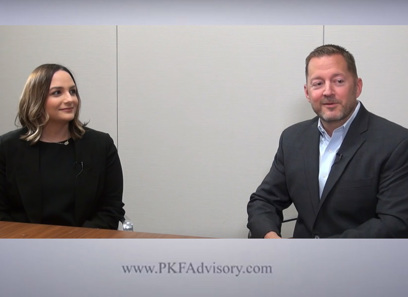M&A Outlook: Key Mergers and Acquisitions Trends to Watch in the Near Future
M&A Outlook: Key Mergers and Acquisitions Trends to Watch in the Near Future
Blog Article
Understanding the Fundamentals of Mergers and Acquisitions for Business Development
Mergers and purchases (M&A) stand for critical tactical decisions for organizations looking for to boost their affordable placing and drive growth. Comprehending the nuances of different merging kinds-- horizontal, vertical, and empire-- serves as a foundation for lining up and determining potential harmonies with company purposes. The path to effective M&A is laden with challenges that require meticulous preparation and implementation. As companies browse this complicated landscape, the ins and outs of the M&A procedure and the principals involved come to be crucial to accomplishing desired end results. What variables ultimately establish success or failing in these transformative ventures?
Definition of Mergers and Acquisitions
Mergers and purchases (M&A) represent strategic deals where companies consolidate their procedures to enhance development, market share, or affordable advantage. A merger usually entails two business coming with each other to create a new entity, commonly with a shared vision and shared benefits. In comparison, an acquisition happens when one firm purchases an additional, assuming control and integrating its procedures right into the buyer's structure.
These purchases are driven by various motivations, consisting of the desire to accomplish economies of range, diversify item offerings, enter new markets, or obtain cutting-edge innovations. M&A task is a crucial element of company approach, enabling firms to adjust to transforming market conditions and react effectively to competitive pressures.
Furthermore, effective M&A purchases require extensive due persistance, cautious arrangement, and reliable integration preparing to understand the awaited synergies. The complexity of these purchases underscores the importance of legal, financial, and operational factors to consider, along with the demand for placement between the business societies of the combining entities - M&A. Eventually, M&An acts as a powerful tool for companies seeking to place themselves for lasting growth and boosted productivity in an ever-evolving organization landscape
Kinds Of Mergers and Acquisitions
While the landscape of mergers and procurements incorporates a range of techniques, they can primarily be categorized into several distinctive types based on their nature and goals. The most common kinds include horizontal, upright, empire, and market-extension mergers.
Straight mergers take place in between business running in the very same sector and at the exact same stage of manufacturing. This type aims to consolidate market share and minimize competition. Upright mergers, on the various other hand, involve firms at different phases of the supply chain, allowing for boosted efficiency and control over production processes.
Empire mergings involve companies from unrelated markets, focused on diversifying item lines or entering brand-new markets, consequently decreasing threat exposure. Market-extension mergings happen between business in various geographical markets but within the exact same market, enabling them to broaden their consumer base and boost market reach.
Each sort of merger or purchase serves unique critical functions and can substantially influence the resulting organization's functional characteristics, market setting, and growth trajectory. Comprehending these categories is important for services thinking about M&A as a path for expansion and affordable benefit.
Key Players in M&A

Investment bankers play a critical function, functioning as middlemans that facilitate arrangements and offer evaluation understandings. Their knowledge parties both helps navigate intricate economic landscapes, making sure reasonable and fair terms. Legal consultants are additionally important, as they make sure conformity with governing frameworks and manage danger by preparing and assessing contracts.
In addition, financial analysts assess the monetary health of both entities, determining synergies and forecasting post-merger performance. Corporate advancement teams within business are accountable for determining possible targets and planning on procurement approaches.
M&A Refine Review
The procedure of procurements and mergings (M&A) commonly entails numerous distinct stages that call for cautious planning and implementation. At first, the process begins with strategic preparation, where business determine their objectives and objectives for the M&A, such as market expansion or diversity. This is adhered to by target recognition, throughout which prospective acquisition targets or merger companions are investigated and evaluated for compatibility.
Once appropriate candidates are identified, the due persistance stage commences. This important step involves a comprehensive examination of the target firm's financials, procedures, and legal standing to identify any kind of prospective risks. After due diligence, the settlement stage occurs, where the terms of the bargain, consisting of price and framework, are talked about and set.
The integration phase happens, where the companies work to incorporate their societies, procedures, and systems successfully. Effective combination is crucial for realizing the expected harmonies and advantages from the M&A.
Advantages and Challenges of M&A
Identifying the potential for development and raised market share, business frequently pursue acquisitions and mergings (M&A) to utilize on tactical advantages. The primary advantages of M&An include enhanced functional performance, increased product offerings, and access to new markets.
Nonetheless, the difficulties connected with M&A are substantial. The monetary effects can be discouraging; the prices of the acquisition procedure, consisting of lawful charges and due persistance, can be significant.
In addition, regulatory examination can make complex the M&A landscape, calling for companies to navigate complicated lawful needs. In summary, while M&A can be a powerful tool for growth, business need to evaluate the potential benefits versus the intrinsic obstacles to ensure successful integration and long-term value creation.
Verdict

Mergers and procurements (M&A) stand for strategic deals where firms settle their procedures to enhance development, market share, or competitive advantage - M&A. Eventually, M&A serves as an effective device for firms seeking to position themselves for sustainable development and increased success in an ever-evolving company landscape
At the leading edge are the acquirers and target business, whose calculated objectives drive the impetus for M&A. The procedure starts with critical preparation, where companies determine their objectives and visit site objectives for the M&A, such as market development or diversification.Recognizing the potential for development and raised market share, firms usually seek mergings and procurements (M&A) to utilize on strategic advantages.
Report this page